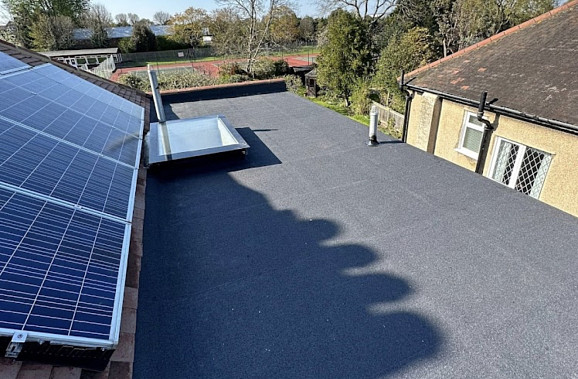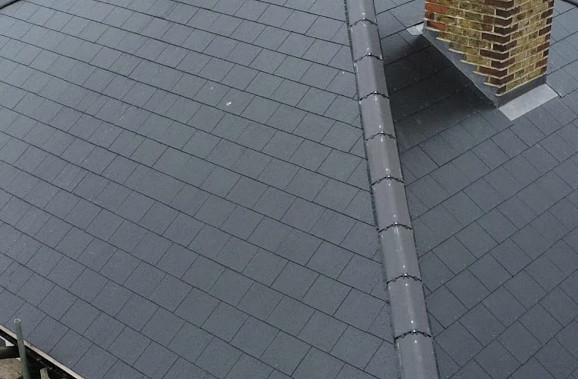Chimneys have long been a common sight across London since the 16th century, largely due to the prevalent use of fires as the primary means of heating. Despite the removal of many chimneys over the years, they remain plentiful, with some dating back centuries. However, owing to their age, chimneys often require repair and maintenance, chiefly due to exposure to London's diverse weather conditions and the gradual deterioration of mortar joints over time.
Repointing doesn't just help preserve the chimney and structure, it also improves the aesthetic look and feel of the property. Chimney repointing is a skill that requires knowledge and experience. Each chimney has its unique nuances, and using a professional roofer will ensure the work is completed safely, and effectively, saving you money in the long run.
This article aims to provide you with general information about chimney repointing, including how to identify potential issues and the most efficient methods for rectifying them.
Signs That Your Chimney Needs Repointing
Cracks
Cracks are one of the most ominous indicators that repointing is likely required. Cracks can appear for several reasons, the number one cause being age, and weathering taking a toll. Cracks can also occur due to house movement, ground movement or structural changes to the building. Cracks require immediate repointing; if neglected, they can lead to water damage and compromise the chimney's structural integrity.
Change in mortar colour
Often, the colour of the mortar will turn darker in areas, this is usually a warning sign that the mortar has become compromised and lost its bonding strength. Colour changes are often due to general weathering and water absorption.
Flaking mortar
If parts of the mortar start to flake when you brush your fingers over it, it is a clear sign that it has reached the end of its life and requires repointing. Flakey mortar will likely let moisture through, resulting in dampness or water damage. It will also be less effective in supporting the chimney, as it has lost its integrity.
Loose bricks or stones
Loose bricks are a clear sign that your chimney requires urgent work, often this is due to mortar that has fallen off or damaged. Loose bricks will not only compromise the chimney structure but also pose a safety issue. If the bricks are not damaged, they can be reused and replaced with the new mortar to save on material costs.
Damaged crown
The crown is critical in helping to protect your chimney, a defective crown will allow water to enter your property and urgently needs repointing. Obvious signs of a damaged crown include chips, cracks or debris on the floor.
Water leaks
This is not always due to damaged mortar, however, all leaks must be checked out immediately. If the mortar is damaged or missing, water will enter through the exposed area, and this needs to be rectified.
How Often Should You Repoint Your Chimney?
There is no exact answer to the above question, this is due to so many different variables. The frequency will depend on the quality of materials used during the chimney construction, the quality of the installation, local weather conditions and the materials that have been used. On the whole, a chimney should be repointed every 20-30 years. However, if there are any worrying signs such as cracks then this could be a lot sooner.
Materials and Tools for Chimney Repointing
Chimney repointing is a highly specialised job, that needs to be carried out effectively through a professional roofer. The equipment is not necessarily highly specialist, but the labour part is.
Materials
- Mortar, sand, water, and a cover (to protect the surrounding area)
Tools
- Ladder or scaffolding, trowel, jointer, pointing tools, brush, mason's hammer, caulking gun, trusty bucket, safety harness and equipment
Cost Considerations for Chimney Repointing
Some of the cost-related scenarios you need to consider before embarking on chimney repointing include:
Extent of damage
Minor repair costs to a chimney can be fairly small, requiring minimal repointing that only takes a few hours. Structural issues and crumbling mortar throughout the structure will require significant work and time. The seriousness of the damage will dictate the materials required, labour and the possibility of additional work to other areas of the building. If the damage is severe, then it is prudent to get expert advice from a reputable local London chimney repair expert such as Knights Roofing.
Accessibility
Accessibility will dictate how easy it is for the roofer to complete the necessary repairs. Factors that can increase costs include the height of the chimney, scaffolding, or cranes, which might be required to enable successful repointing. Other issues include dangers nearby, such as electricity lines or buildings blocking access, which can add to costs.
The type of roof can also increase the expenses. A steep-pitched roof will make repairs more difficult and increase labour costs. Repointing work must be completed professionally and properly. Skipping work that does not allow for effective repairs will cost you more in the long term.
Types of mortar
There are many different types of mortar, and they differ in cost quite significantly. Some of the more popular mortar types include (listed from cheapest to expensive):
- Cement Mortar: One of the most common and widely used mortar types.
- Masonry Cement Mortar: A combination of Portland cement, hydrated lime, and masonry sand.
- Lime Mortar: Made from lime as the name suggests, costs will vary depending on the type of lime used.
- Hydraulic Lime Mortar: Contains hydraulic materials to improve the strength and durability of the mortar.
- Natural Hydraulic Lime Mortar: Again, it uses hydraulic additives that are naturally sourced.
- Polymer-modified Mortar: Polymers are added to the mortar through a manufacturing process and this tends to be the most expensive.
Maintaining Your Chimney After Repointing
After chimney repointing, it is still important to help maintain your chimney and reduce the need for further repair work. Some of the steps you can take include regular inspections of the chimney and surrounding area, this will help address issues before they become serious. If minor repair work is required, such as a repair to a small crack, deal with it promptly before it escalates and becomes even more expensive to fix. It is also important to actively monitor for water damage, including mould, as this could indicate a potential issue.
At Knights Roofing, we have years of experience in all types of chimney repairs and repointing throughout the South West London area. If you have any questions or need advice or an obligation-free quote, just let us know.




